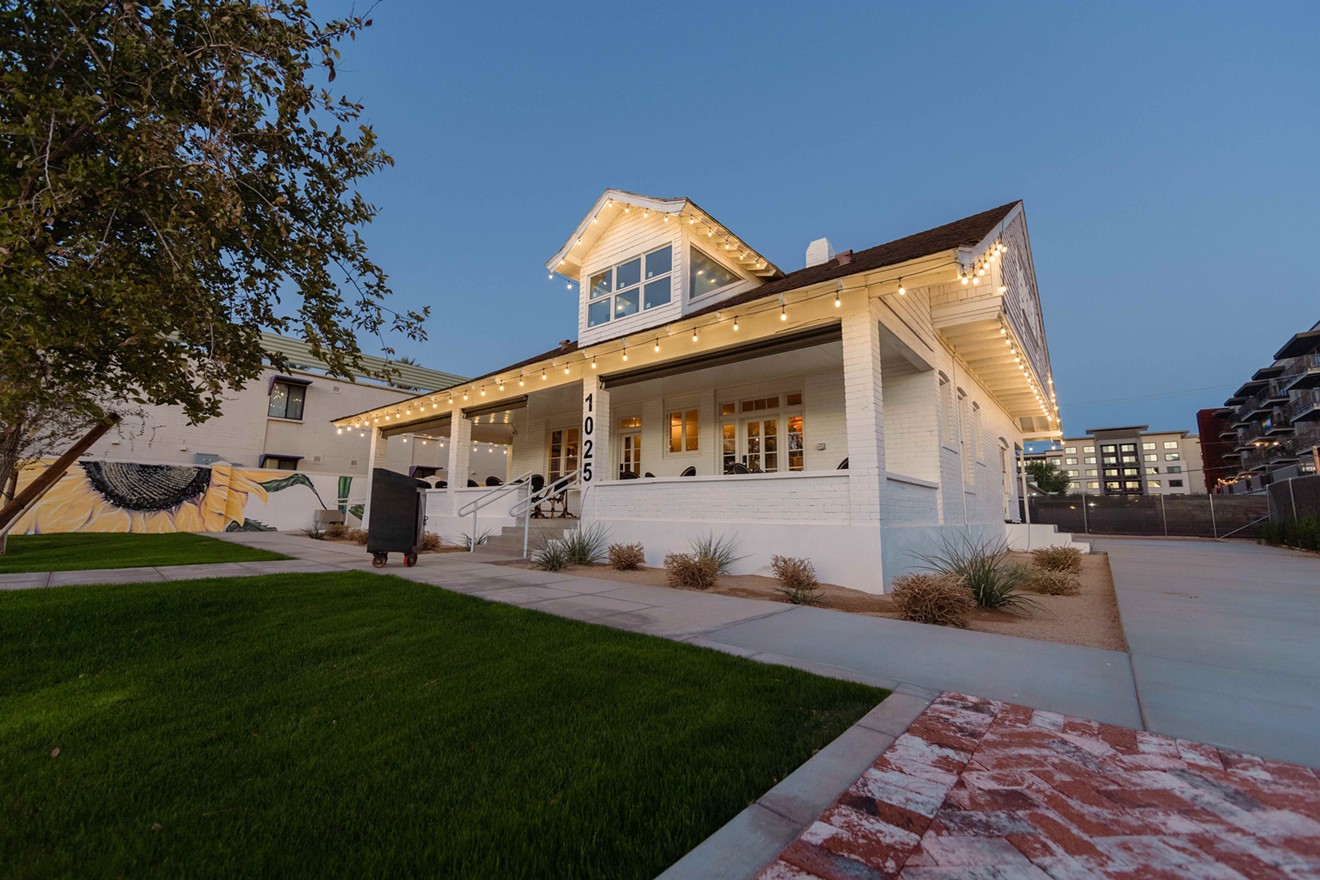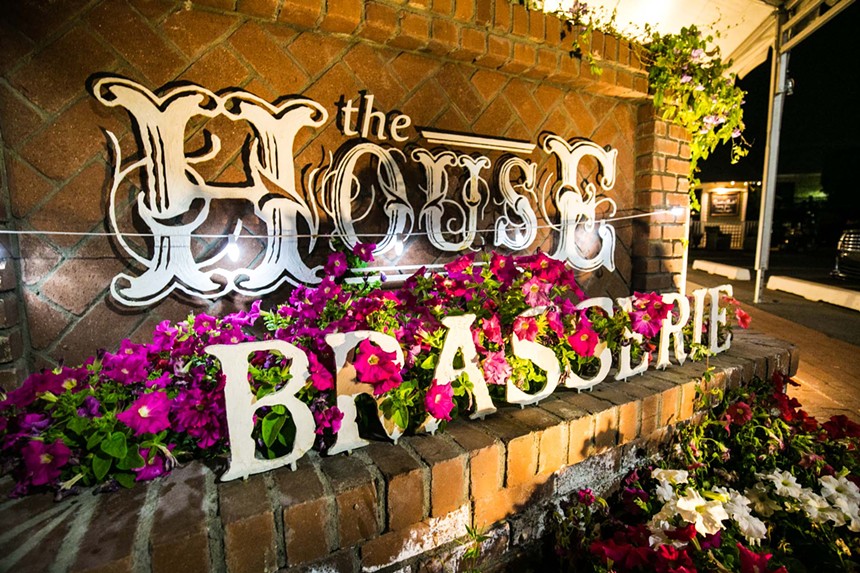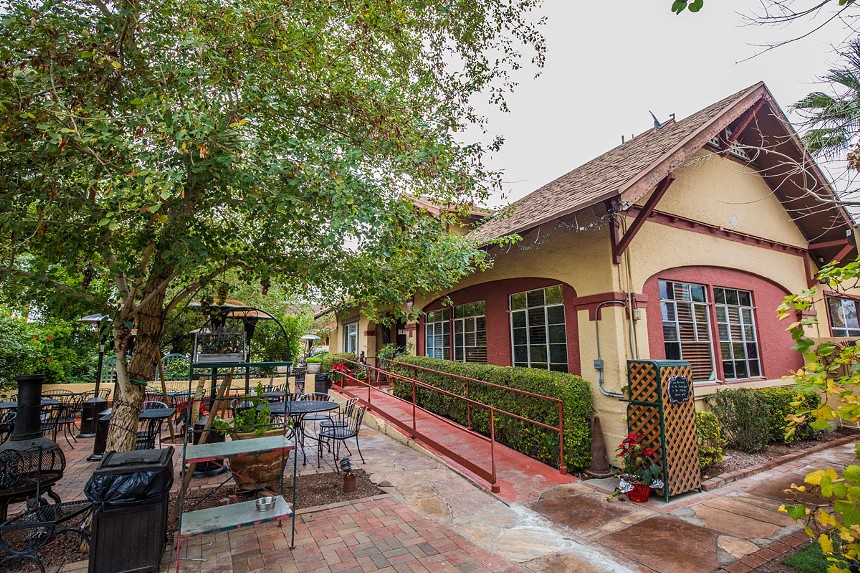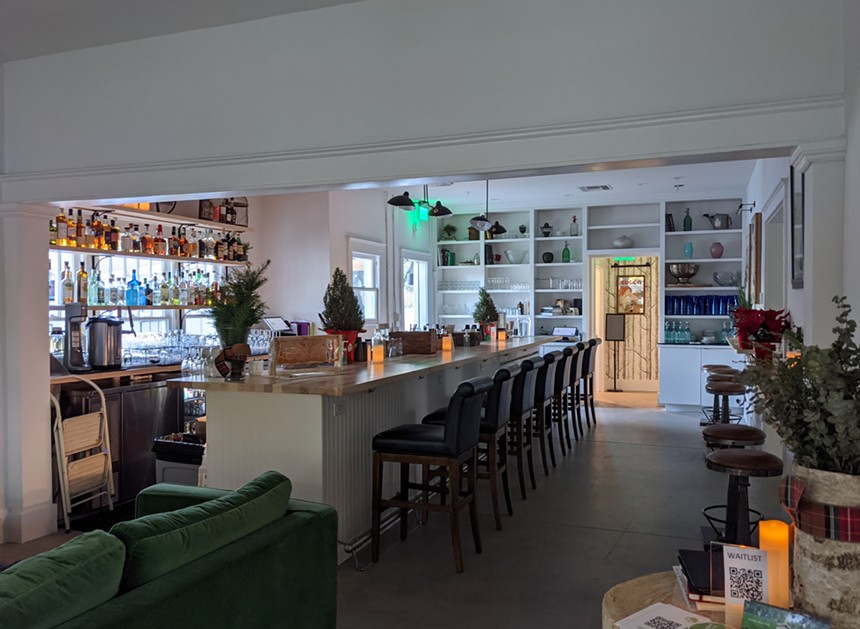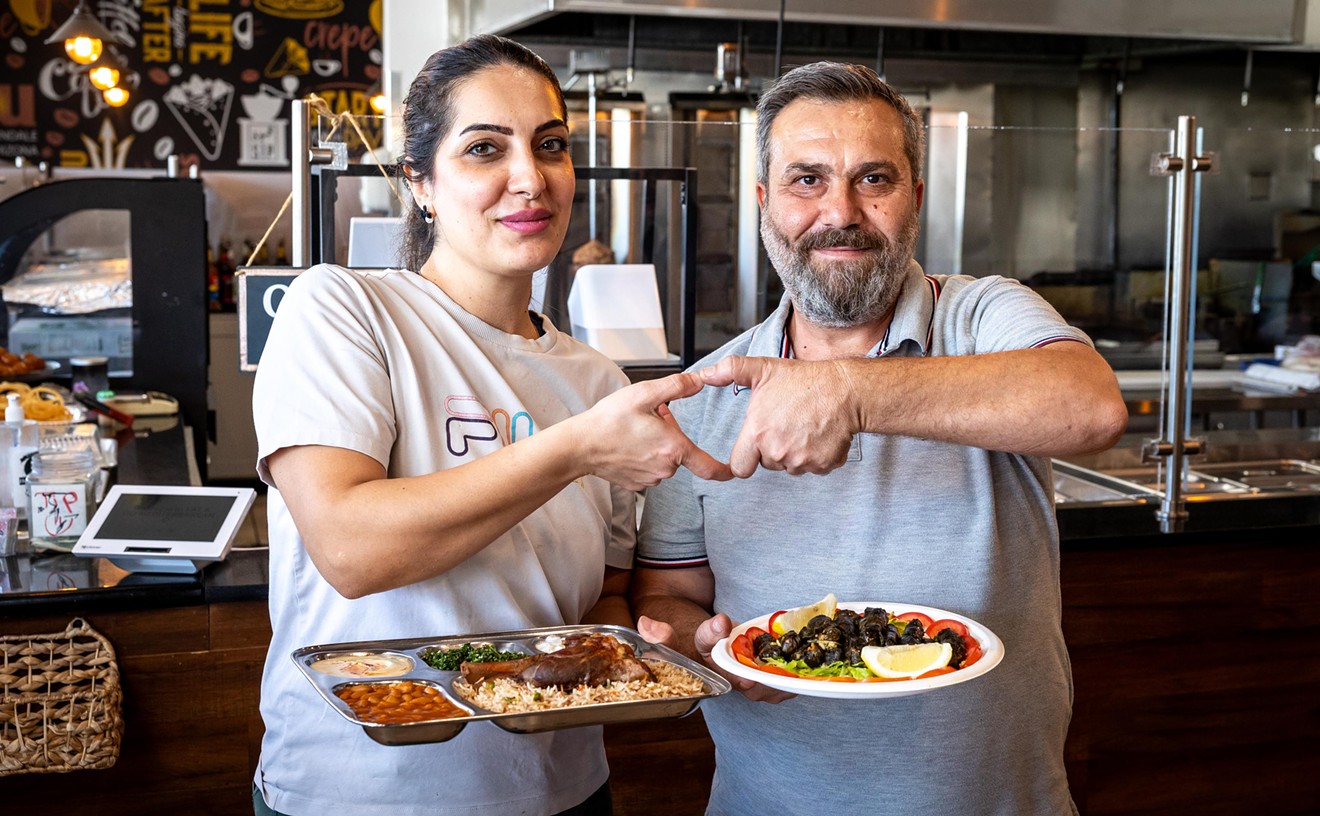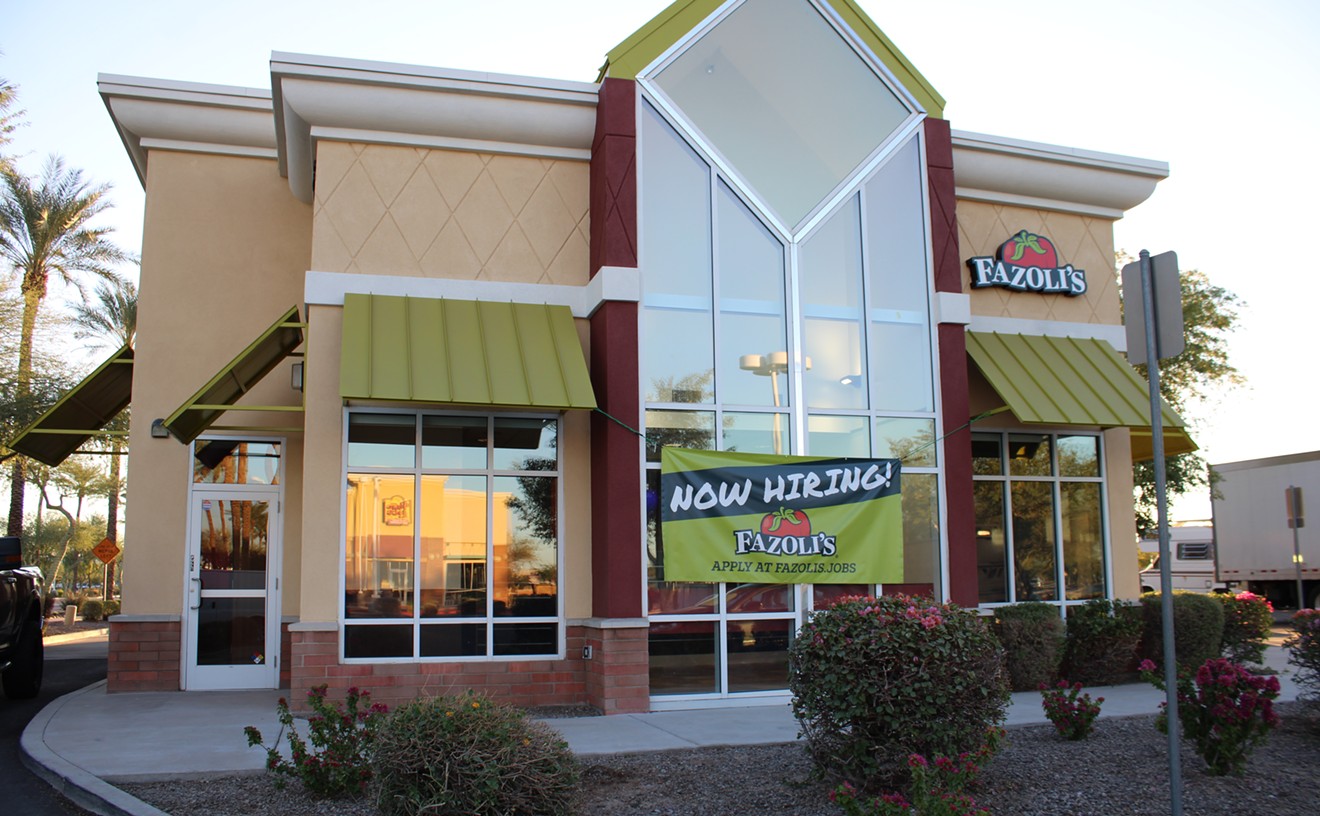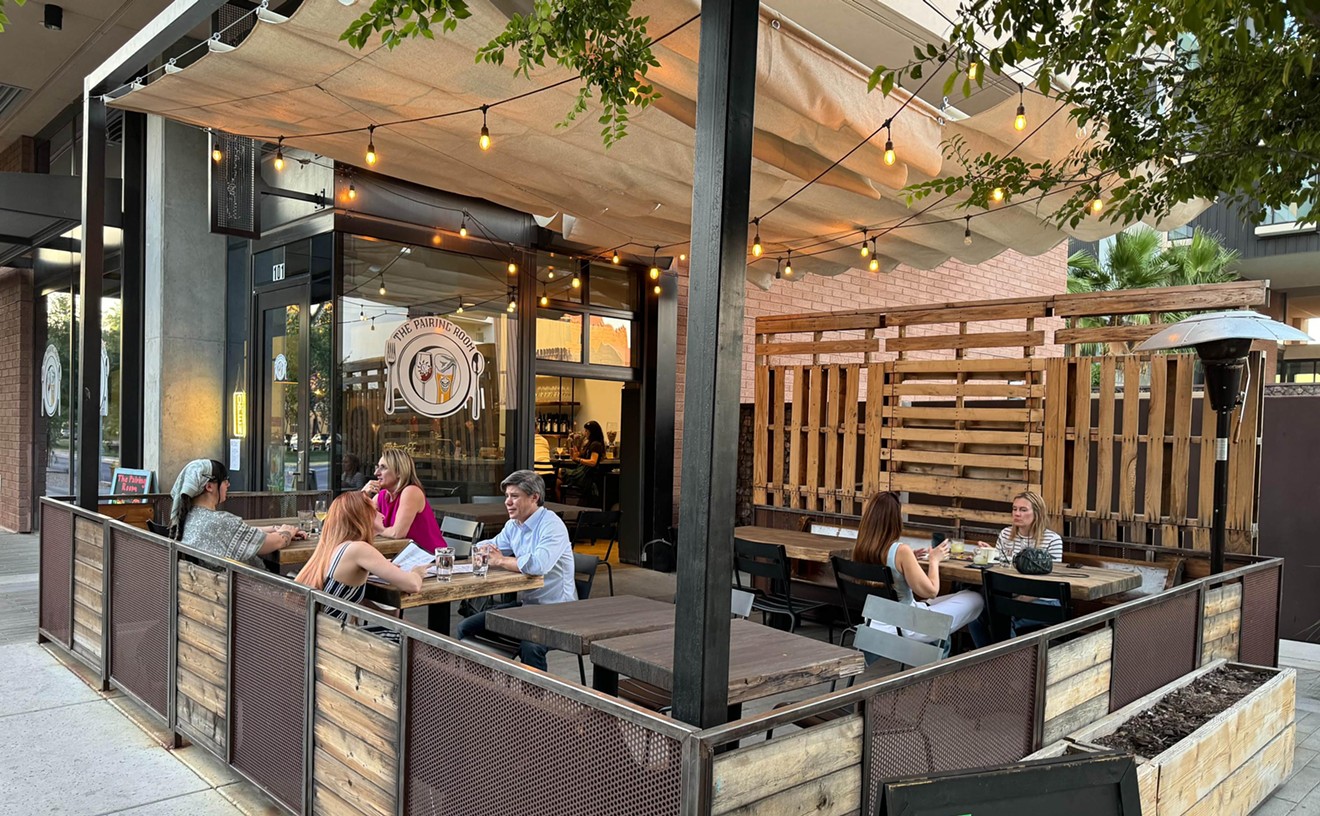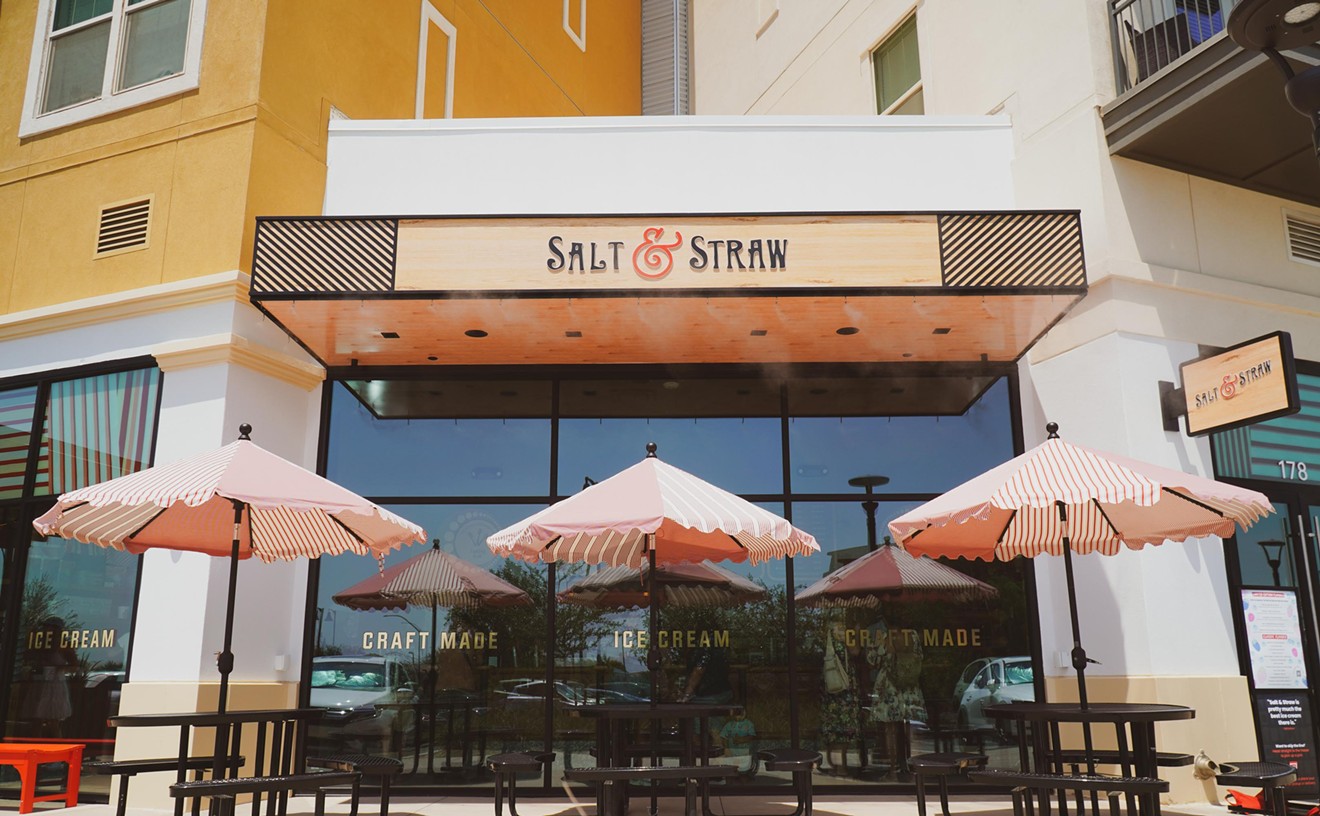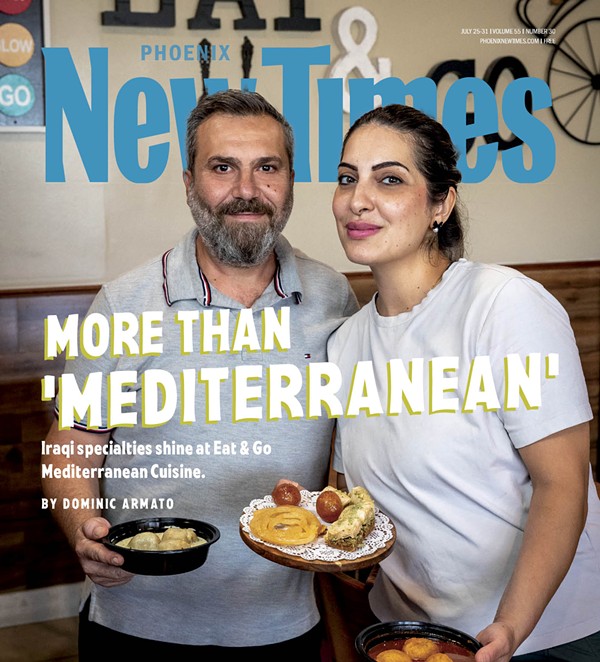These early settlers laid the foundation for many local businesses, desert dwellers, and visionaries that have transformed the Phoenix area into what we know today. Their hard work and hope for the future are still appreciated by many as their legacy lives on in a new way.
Today, a collection of historic homes in Phoenix and beyond are preserved by business and property owners who have transformed them into contemporary restaurants and cozy bars. History and nostalgia combined with modern-day luxuries make these Valley establishments a unique glimpse into the Valley's past.
The House Brasserie
6936 East Main Street 480-634-1600 Nestled in a historic block of Old Town Scottsdale, The House Brasserie is a French-influenced, modern American restaurant operating out of a home built in 1939 by the Mowry family. Following the Dust Bowl in the ‘30s, the Mowrys left their home and farmland in Texas and moved to Arizona to grow Pima cotton. They purchased over 100 acres in Scottsdale, planted and harvested cotton, and constructed the home that stands there today.
The Mowry family lived in the home until the early 2000s when Mrs. Mowry died. She was most known for her rose bushes. The house’s neighbor, Hotel Valley Ho transplanted a rose bush onto their property to honor her contributions to the community, and, according to the restaurant's events manager Anna Maria Ieraci, the Mowry children still visit The House Brasserie today for birthday celebrations.
Cibo Pizzeria
603 North Fifth Avenue 602-441-2697 Set in a restored bungalow built by a rancher in 1913, Cibo Pizzeria resides in a charming neighborhood in central Phoenix. Before becoming a pizzeria, the home was once a boarding house and a naturopathic doctor’s office, according to the restaurant's co-owner and chef Guido Saccone.
Complete with an intimate front patio, exposed brick, hardwood floors, stained glass, and a fireplace, the building became Cibo in 2005 and has been serving Italian staples ever since. Popular for its red and white pizzas, fresh salads, and housemade pasta, Cibo is a local favorite for lunch and dinner.
Garden Bar
822 North Sixth Avenue 602-612-4438 Tucked into a downtown Phoenix neighborhood known as Roosevelt South lies a 1914 California bungalow that's now home to Garden Bar. The “garden to glass” cocktail bar is the most recent chapter in the property’s history which dates back to 1912 when the parcel of land was first purchased.
According to the bar's owners, Kim and Kevin Haasarud, the story goes that Mrs. I.A. Wittenmyer was the first buyer. She sold the parcel for $10 to M.P. White and in 1914, he built the bungalow that stands there today. Fast forward and White’s widow sold the property to Emma Calmes during Prohibition in 1922 with stipulations that specified no part of the premises should be used for dealing liquors and spirits.
Following Calmes’ death, the property saw several owners including longtime residents the Kilroy family, along with avoiding demolition, and becoming a restoration project. It was eventually bought by the Haasaruds in 2017.
They have transformed the bungalow into a craft cocktail bar — an ironic nod to the home’s history during the Prohibition era. The bar stands where the kitchen used to be, the sink and kitchen window still in the same place. Sitting areas throughout the bar are located in the house's many individual rooms.
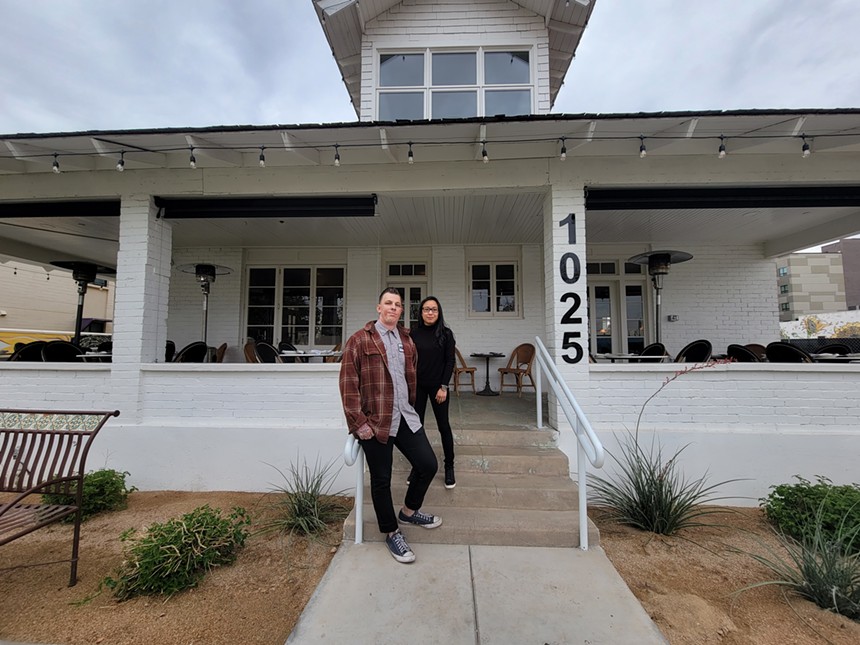
Esther Noh and TJ Culp's new restaurant, Sottise, is located inside a historic home just north of Roosevelt Row.
Natalia Ankiewicz
Sottise
1025 North Second Street 602-254-6378 Originally built and occupied by architect Leighton G. Knipe in 1909, this historic downtown Phoenix building is now home to the modern French bistro Sottise. Also known as the Knipe House, it is one of a small number of original structures left in the Roosevelt Row arts district. Knipe designed several buildings in the Phoenix area including structures on Tempe's Arizona State University campus.
The home was renovated many times over the years and in 2010, suffered damage after a devastating fire, according to the Motley Design Group, who eventually remodeled the space. Despite countless plans for the building, it remained empty for several years until it was renovated into a commercial space and purchased in 2021 by current owners, TJ Culp and Esther Noh.
Together, they have created a restaurant that pays homage to French classics in both food and wine. Customers can sit on the house's wrap-around front porch or step inside the cozy dining room for a glimpse into the past.
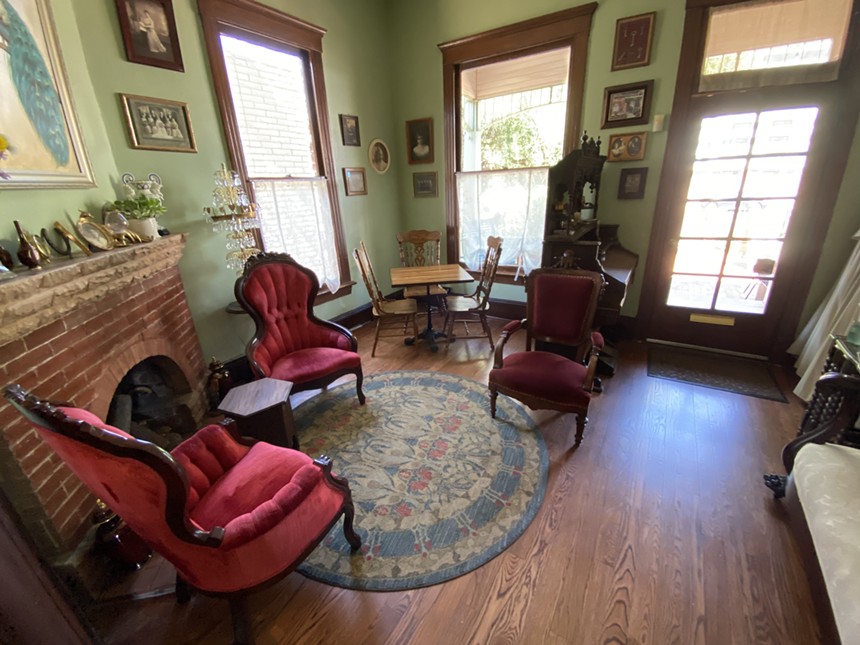
Cozy bistro and wine bar, The Farish House is one of a small number of remaining historic structures in downtown Phoenix.
The Farish House
The Farish House
816 North Third Street602-281-6659 Constructed right at the turn of the century and included in the Phoenix Historic Property Register, The Farish House has seen its fair share of residents over the years, according to owner Lori Hassler.
Built in 1899 by a local salesman named Howard Cassidy, the house served as a single-family residence for the majority of its life. Once Cassidy moved on, William A. Farish, who became the first city manager of Phoenix in 1912, and his wife Jane moved into the house around the time they got married in 1901.
In more recent years, it was a duplex in the ‘70s, an art gallery, business offices, and formerly The Roosevelt Tavern from 2006 to 2012. The Farish House sits in the eclectic Evans Churchill neighborhood in downtown Phoenix and shares a landlord with Songbird Coffee and Tea House, Hassler says. Registered as “The Farish House,” the name pays tribute to the home’s history and the restaurant's menu sticks to classic dishes including ratatouille, mac and cheese, and beef stew.

